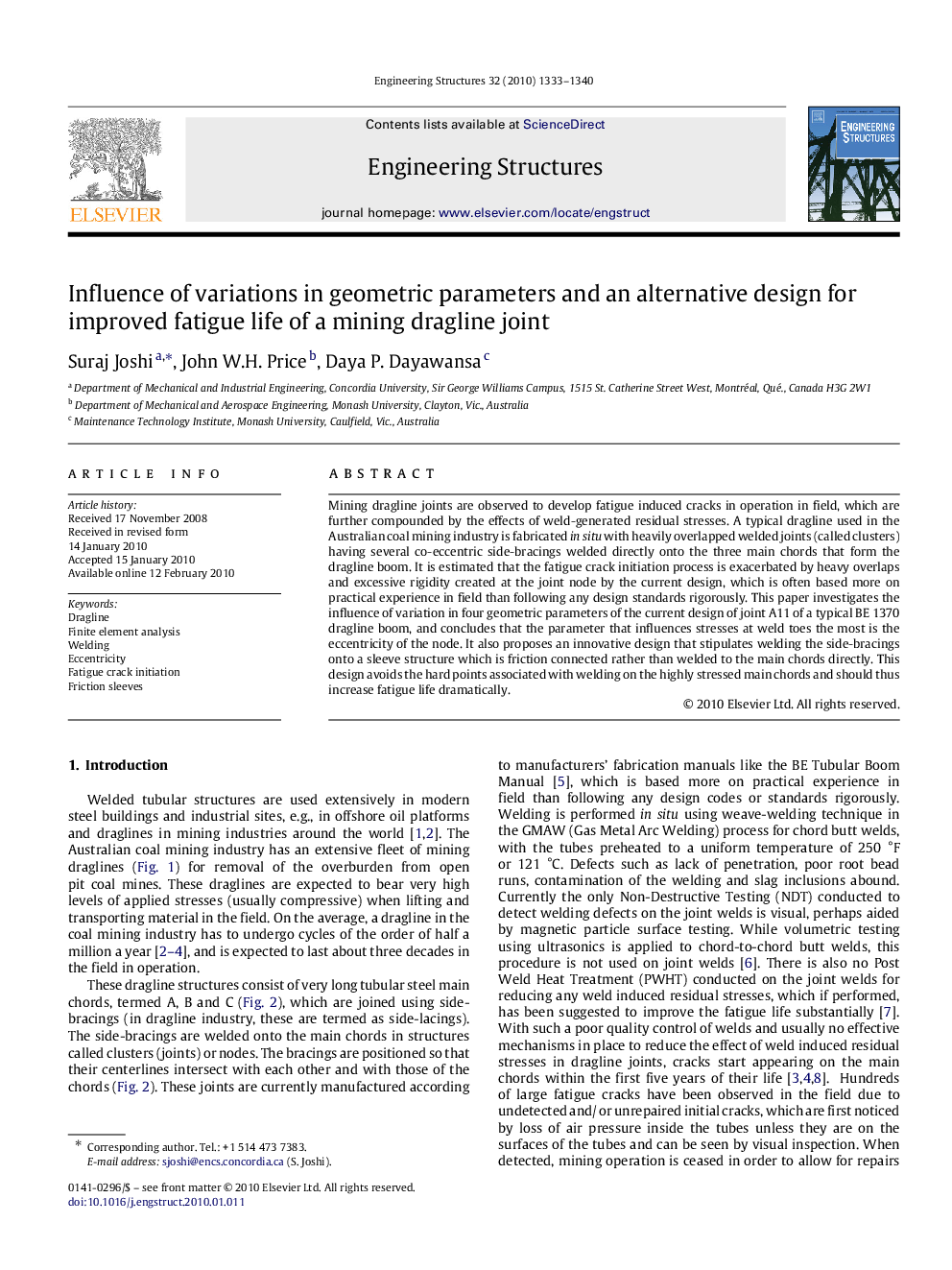| Article ID | Journal | Published Year | Pages | File Type |
|---|---|---|---|---|
| 268566 | Engineering Structures | 2010 | 8 Pages |
Mining dragline joints are observed to develop fatigue induced cracks in operation in field, which are further compounded by the effects of weld-generated residual stresses. A typical dragline used in the Australian coal mining industry is fabricated in situ with heavily overlapped welded joints (called clusters) having several co-eccentric side-bracings welded directly onto the three main chords that form the dragline boom. It is estimated that the fatigue crack initiation process is exacerbated by heavy overlaps and excessive rigidity created at the joint node by the current design, which is often based more on practical experience in field than following any design standards rigorously. This paper investigates the influence of variation in four geometric parameters of the current design of joint A11 of a typical BE 1370 dragline boom, and concludes that the parameter that influences stresses at weld toes the most is the eccentricity of the node. It also proposes an innovative design that stipulates welding the side-bracings onto a sleeve structure which is friction connected rather than welded to the main chords directly. This design avoids the hard points associated with welding on the highly stressed main chords and should thus increase fatigue life dramatically.
